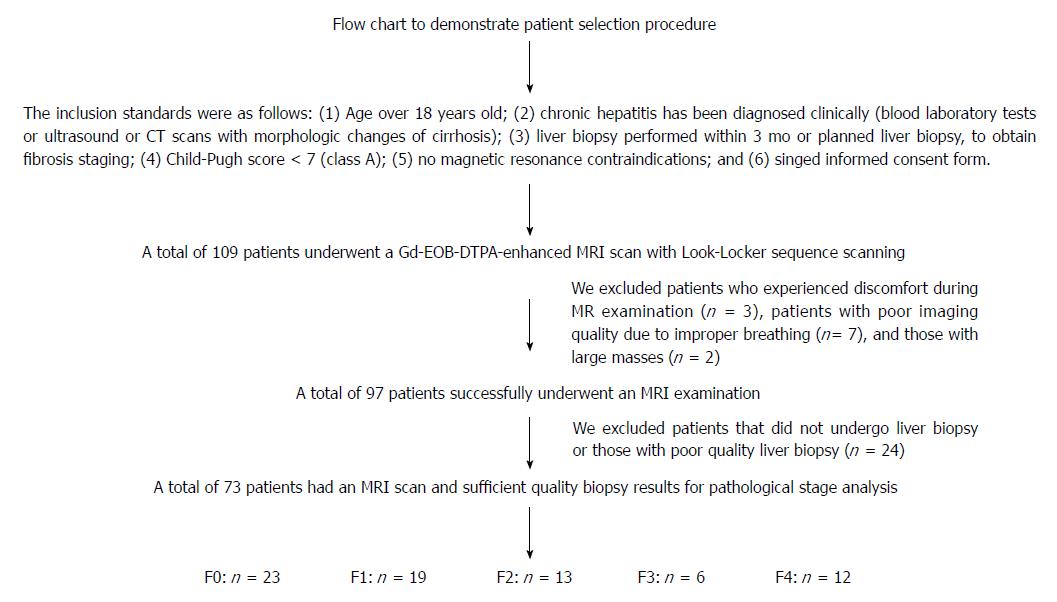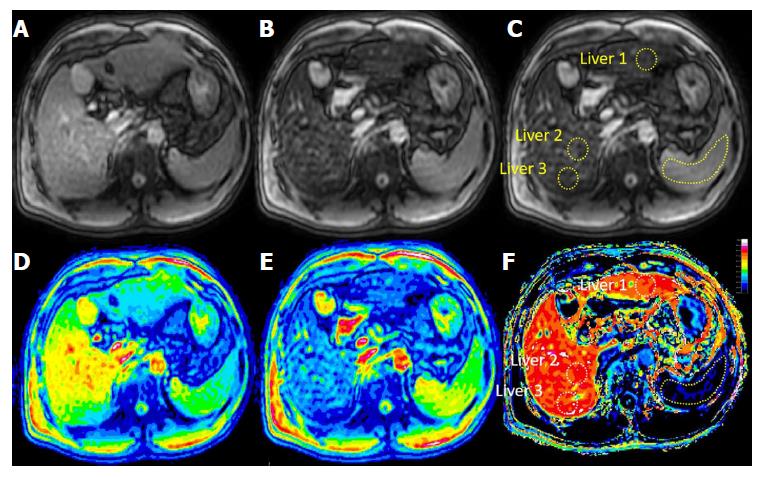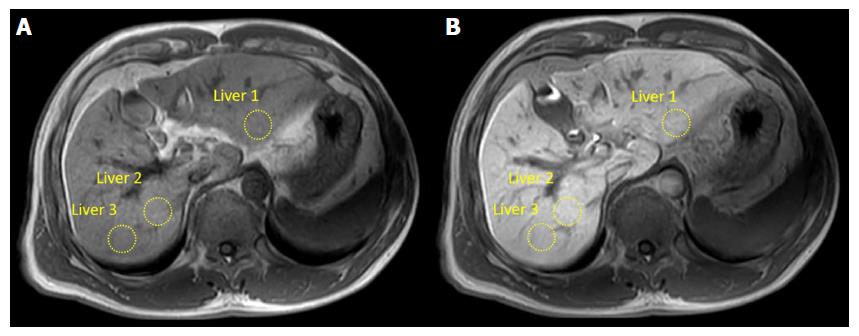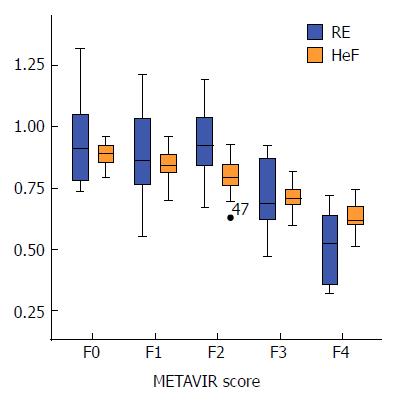Copyright
©The Author(s) 2018.
World J Gastroenterol. May 14, 2018; 24(18): 2024-2035
Published online May 14, 2018. doi: 10.3748/wjg.v24.i18.2024
Published online May 14, 2018. doi: 10.3748/wjg.v24.i18.2024
Figure 1 Flow chart to demonstrate the patient selection procedure.
Figure 2 Precontrast (A, D) and postcontrast (B, E) T1 maps in a 72-year-old male with a METAVIR score of F4.
The hand-drawn regions of interest of the liver and spleen are shown (C; dotted closed curves). HeF image (F) is shown, and HeF liver 1, HeF liver 2 and HeF liver 3 values were 68.13%, 72.46% and 70.45%, respectively, resulting in a HeF liver average of 70.34%. HeF: Hepatocyte fraction.
Figure 3 Precontrast (A) and postcontrast (B) T1-weighted images in a 72-year-old male with a METAVIR score of F4.
The hand-drawn regions of interest of the liver are shown (dotted closed curves). RE was 0.45. RE: Reduction rate of T1 relaxation time.
Figure 4 Representative images from patients with liver fibrosis at F0-F4 METAVIR stages.
A: F0, HeF = 97.16%; B: F1, HeF = 89.21%; C: F2, HeF = 79.92%; D: F2, HeF = 72.94%; E: F3, HeF= 69.17%; F: F4, HeF = 62.43%. HeF: Hepatocyte fraction.
Figure 5 Box-and-whisker plots of T1 values.
RE and HeF are shown for each METAVIR stage in relation to CHB and CHC. T1 values are reported on the Y-axis, and METAVIR stage of fibrosis is reported on the X-axis. CHB: Chronic hepatitis B; CHC: Chronic hepatitis C; HeF: Hepatocyte fraction; RE: Reduction rate of T1 relaxation time.
Figure 6 Comparison of the receiver operating characteristic curves of Pre, Post, RE and HeF for different fibrosis thresholds.
From left to right: F0 vs F1-F4 (≥ F1), F0-F1 vs F2-F4 (≥ F2), F0-F2 vs F3-F4 (≥ F3), and F0-F3 vs F4 (≥ F4). The numbers in the boxes indicate the AUC values and 95%CIs. AUC: Area under the receiver operating characteristic curve; CI: Confidence interval; HeF: Hepatocyte fraction; RE: Reduction rate of T1 relaxation time.
- Citation: Pan S, Wang XQ, Guo QY. Quantitative assessment of hepatic fibrosis in chronic hepatitis B and C: T1 mapping on Gd-EOB-DTPA-enhanced liver magnetic resonance imaging. World J Gastroenterol 2018; 24(18): 2024-2035
- URL: https://www.wjgnet.com/1007-9327/full/v24/i18/2024.htm
- DOI: https://dx.doi.org/10.3748/wjg.v24.i18.2024














